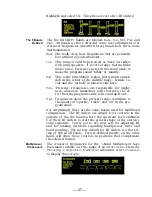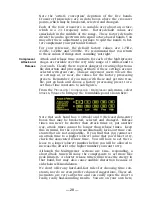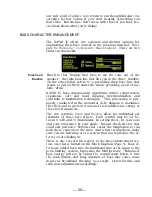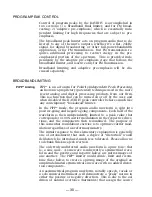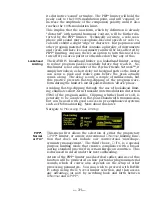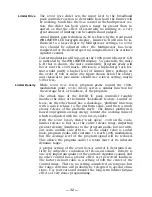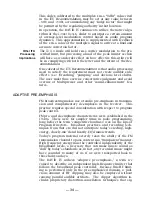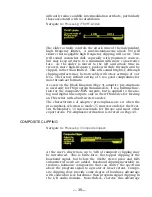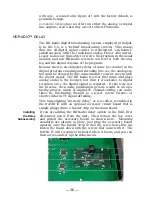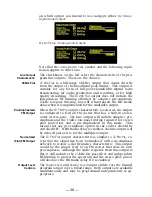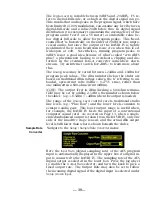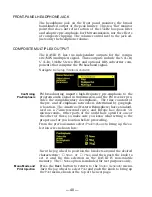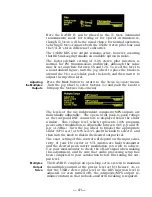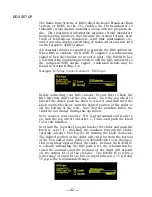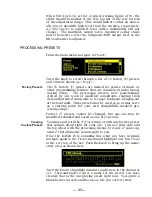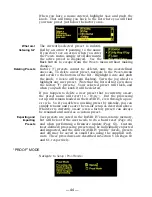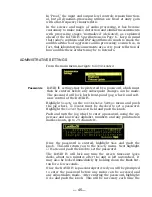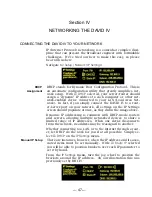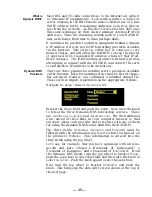
— 34 —
This slider, calibrated to the multiplex r.m.s. “0dBr” value cited
in the ITU
Recommendation
, may be set at any value between
–1dBr
and
+5dBr
, accommodating any ‘fudge factor’ that might
be permitted by the regulating authority in that location.
In operation, the DAVID IV continues to utilize the native algo-
rithm of the
Limiter Density
slider to anticipate a certain amount
of average-level modulation control based on audio program
dynamics. This approximation is supplemented with feedback
of the r.m.s. value of the multiplex signal to arrive at a final and
accurate correction factor.
Other ITU
Processing
Implications
The
ITU
mode will hold r.m.s carrier modulation to the pre-
scribed limit, but processing ahead of the peak limiter section
will have a second-order effect on how effective this utility will
be in complying with both the letter and the intent of the
Rec-
ommendation
.
One
caveat
of the ITU
Recommendation
is that audio processing
used to satisfy the requirement must not create audible side-
effects (i.e.: ‘breathing,’ ‘pumping’ and obvious level shifts).
The user must thus exercise conservative judgment and avoid
overuse of Multipressor and other ‘sound-enhancement’ fea-
tures.
ADAPTIVE PRE-EMPHASIS
FM broadcasting makes use of audio pre-emphasis in transmis-
sion and complementary de-emphasis in the receiver. This
practice requires special consideration with respect to program
peak control.
FM pre- and de-emphasis characteristics were established in the
1940s. These were far simpler times in radio programming,
long before the term ‘competitive loudness’ was on the lips of
Program Directors. Broadcast practices and recording tech-
niques from that era did not anticipate today’s sizzling, high-
energy, closely-mic’d and heavily-EQ’d music trends.
Today’s program material severely taxes the ability of the FM
transmission channel to pass content in a ‘transparent’ manner.
High frequency energy must be controlled independently of the
broadband levels, a necessity that can make music sound as
‘dull’ by today’s standards as, in fact, any recorded music might
have sounded to many of us if we were transported back to
those halcyon days.
The DAVID IV utilizes ‘adaptive pre-emphasis,’ a term we
coined to describe an independent high-frequency limiter that
follows the broadband peak controller. Because this HF limit-
ing is performed only in the pre-emphasized domain, a judi-
cious amount of HF clipping may also be employed without
causing painful audible artifacts. The clipper algorithm in-
cludes proprietary distortion-cancellation techniques that sig-
Summary of Contents for 719
Page 1: ...DAVID IV FM Audio Broadcast Processor Installation User Guide www inovonicsbroadcast com ...
Page 2: ......
Page 4: ......
Page 70: ... 66 NOTES AND DOODLES ...








